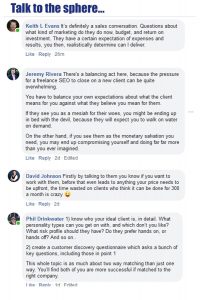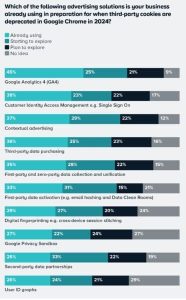by David Grow, Op-Ed Contributor, August 4, 2016
Negative keywords can reduce costs when marketers optimize their account performance by limiting the ads served for irrelevant searches. The second part to this series explains the implementation strategy. For an overview of match types, negative lists and account limits, please refer to Part I.
Irrelevant Traffic: Irrelevant traffic keywords are easy to spot in search query reports, as they typically have very low click-through rates (CTR). An example would be the search “book a flight” triggering an ad for books. Since the two industries do not align, the resulting CTR in those situations should be very poor. A negative keyword of “flight” would prevent that irrelevant search from continuing to match to the bookseller’s ads and would improve their performance.
Negative Association Traffic: Common examples include “fraud” searches (e.g. “ABC company fraud”) or disaster-related searches (e.g. “Airline X flight crashes”). Advertisers can use negatives to prevent their paid-search traffic from being associated with those searches.
Poor-Performing Traffic: Deciding to block irrelevant or negative traffic can be easy; it’s much harder to decide to block seemingly relevant and useful traffic that is just not performing as expected. Typically, advertisers take other measures (e.g., ad copy testing, bid changes, landing page testing) before completely blocking poor-performing, seemingly relevant traffic.
Funneling Traffic: Advertisers will often take their exact match keywords and add them as negative exact match keywords to their phrase, broad, or modified broad match ad groups or campaigns. Utilizing that strategy enables advertisers to obtain more control over traffic — and by adding the negatives to their other match types, ensures that their exact match keywords get as much of the traffic as possible.
For example, if an advertiser has 50,000 impressions on the search “cheap flights” and has the exact phrase and broad match version of the keyword “cheap flights” in their account, those 50,000 impressions could go to any of the three match types, as all would be eligible to trigger an ad. Now when the advertiser goes to make a decision — whether it’s a decision about bidding, strategy, or anything else — they won’t have a clear picture of how that search performs in their account. The performance of the three keywords cannot be combined because the phrase and broad match versions of the keyword are eligible to serve on thousands of other possible searches. The only way to truly understand how that search performs is for the advertiser to force all the traffic for that search through the exact match version of the keyword.
The same approach can be taken with phrase match keywords being used as negative phrase match keywords on broad or modified broad campaigns.
Other Things To Consider
Conflicting Negatives: Conflicting negatives block traffic for the positive keywords within an advertiser’s account. Bing offers a conflicting negatives report that can be used to identify any negatives that are blocking traffic to active keywords. To identify any conflicting negatives in Google, advertisers must either reach out to their account representatives, or check the alerts located in the upper right-hand side of their account (the “bell” icon).
Low-Search-Volume Negatives: Advertisers who use negative keywords to funnel traffic need to make sure they don’t add any low search volume keywords as negative keywords. For instance, if an advertiser wants to ensure that the traffic for “winds of winter book deal” goes to the exact match keyword [winds of winter book deal] rather than the phrase match keyword of “book deal,” then that advertiser might decide to add the exact match keyword as a negative to where “book deal” is built. However, if the exact match keyword has low search volume status, then it is not eligible to receive traffic. Under this scenario, neither the exact match keyword (due to low search volume status) nor the phrase match keyword (due to the negative) will be eligible to serve on the search “winds of winter book deal.”
A good way to QA potential low search volume negatives is to take the negative and positive keyword lists and perform a VLOOKUP to see if any negative keywords match any low-search-volume keywords. Remove any that are found so that traffic can return to the keywords that would otherwise be eligible to serve.
MediaPost.com: Search Marketing Daily
(29)
Report Post






